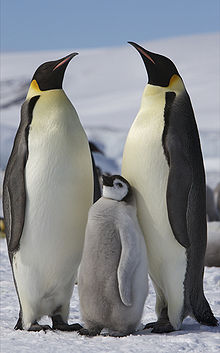
CATEGORIES:
BiologyChemistryConstructionCultureEcologyEconomyElectronicsFinanceGeographyHistoryInformaticsLawMathematicsMechanicsMedicineOtherPedagogyPhilosophyPhysicsPolicyPsychologySociologySportTourism
THE ANTARCTIC
| Unlike the Arctic, which is an ocean surrounded by continents, the Antarctic is a continent surrounded by oceans. Antarctica is the most remote, inhospitable place on Earth and consists of a large land mass and numerous offshore islands. Most of the mainland is covered by a vast ice cap, which breaks up at the coastline, forming huge icebergs up to 125 miles (200 km) long. Antarctica is the only continent that has no permanent human population – the only inhabitants are visiting scientists studying the local environment. It is also unique in being governed by an international treaty that forbids countries from owning or exploiting the land. | 
| ||||

| |||||

| Territorial claims in the Antarctic These claims have been suspended under the Antarctic Treaty. Stations can be set up for research, but military activities are forbidden. | ||||
| THE ANTARCTIC TREATY In the first half of the 20th century, many countries claimed territory in Antarctica. In order to prevent future conflict, 12 countries signed the Antarctic Treaty in 1959, which suspended all national claims to the land. The treaty designated Antarctica as “a continent for science,” and stated that it should be used for peaceful purposes only. Today, 45 countries have signed the treaty, which is one of the most successful examples of international cooperation. | |||||
| RESEARCH STATIONS Barely 1,000 people live in Antarctica in the winter, with another 3,000 joining them during the summer months. All are involved in scientific research and live on one of the 46 or so bases dotted around the continent. Each base is specially insulated against the intense cold and some have been constructed below the surface in order to conserve heat. Diesel fuel is used for heating and generating electricity, and enough fuel, food, and other supplies are kept to last 12 months, in case weather prevents new supplies from being brought in. |  Vernadsky Research Base
Vernadsky Research Base
| ||||

| STUDYING ANTARCTICA Scientists from all over the world come to Antarctica to study its unique climate, weather, geology, and wildlife. | ||||
| The age-old rocks tell them much about the development of the Earth, while analysis of the many meteorites that hit the ice cap provides valuable information about the Universe. | |||||
| TOURISM Each year, a few intrepid tourists visit Antarctica, exploring the dramatic coastline in cruise ships or flying inland over the ice to land at the South Pole. So far, the small number of tourists has had little effect on the environment. However, the environment is threatened by the garbage slowly accumulating around the older scientific bases. | | ||||
| ANTARCTIC EXPLORATION It wasn’t until 1820 that the shores of Antarctica were first sighted. From the 1840s onward, explorers began to map the continent, but the South Pole remained unknown. In the summer of 1911–12, two expeditions – one from Norway led by Roald Amundsen, the other from Britain led by Robert Scott – set out to reach the Pole. Amundsen arrived on December 14, followed by Scott a month later. | |||||
| CROSS-SECTION THROUGH THE ANTARCTIC | |||||

| Antarctica is buried beneath an enormous ice cap that covers 99.6 percent of the land area. It has formed from the buildup of snow compacted over 100,000 years. The ice cap contains most of the freshwater on Earth, and 90 percent of all the ice. If the ice were to melt, the oceans would rise by up to 210 ft (64 m). The ice weighs so much that it pushes much of Antarctica below sea level. | ||||
| ANTARCTIC WILDLIFE Antarctica’s severe climate and isolated position have greatly reduced the variety of its wildlife. The largest animal that lives on land all year round is a tiny insect. During the brief summer, however, seals, penguins, and many birds visit the continent to take advantage of the safe breeding sites and plentiful food supply to raise their young. At sea, a dozen species of whale feed off the many seals, fish, and krill that live in the icy waters. |

| Krill are shrimp-like crustaceans up to 2 in (5 cm) in length. | |
| They feed on plankton and other crustaceans and occur in such large numbers that they sometimes turn the oceans around Antarctica pink. | |||

| The majestic emperor penguin stands up to 4 ft (1.15 m) tall and can weigh 66 lb (30 kg). After spending most of the year at sea, the emperors come ashore in April to breed. The male alone then incubates the single egg during the icy winter, holding it on his feet to keep it warm. The female returns in July to feed the newborn chick. | ||
Date: 2015-04-20; view: 1833
| <== previous page | | | next page ==> |
| THE ARCTIC | | | AN IDEAL HUSBAND |